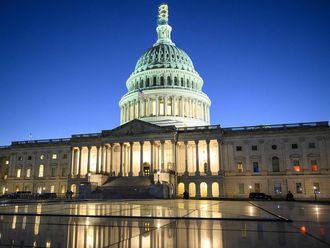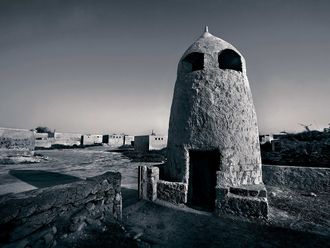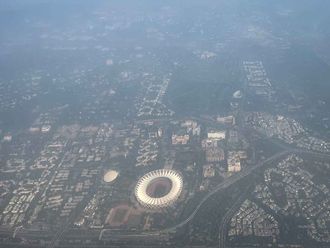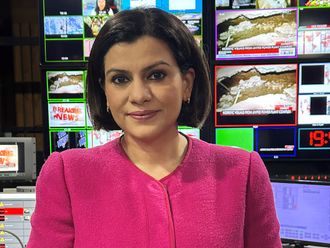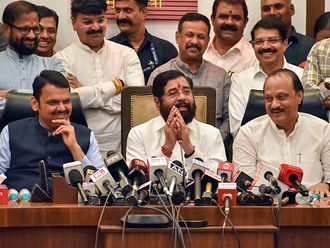
President Barack Obama’s announcement of withdrawal of 10,000 US troops from Afghanistan by the end of 2011 has set the stage for accelerating the transition of security duties to the Afghan National Army and other auxiliary forces.
The transition plan had already been drawn up and the Afghan security forces were scheduled to take charge from the US-led foreign troops in seven places in Afghanistan in July 2011, but henceforth there would be urgency in accomplishing this task. Questions are being asked whether the Afghan security forces could do the job once the Nato troops are gone and in most cases the answer is in the negative.
Obama’s phased drawdown plan would bring home 33,000 US troops from Afghanistan by September 2012. His decision to withdraw 10,000 US soldiers in 2011 is bold in view of the expectations that he would drawdown 5,000 only this year. Obama wanted not only to fulfil the promise he had made to the American people for beginning the withdrawal of US soldiers from Afghanistan by July 2011, but also do it in a significant way by pulling out more troops than generally expected.
Though 68,000 US troops would remain in Afghanistan until 2014 as decided by the Nato in its summit meeting in Lisbon, Portugal last year, American military commanders would have fewer soldiers by the next summer to undertake combat operations and the momentum being claimed for reversing the Taliban gains could come to an end. The US military commanders were opposed to substantial troops’ withdrawal from Afghanistan, but Obama’s decision asserted civilian control over the military in the US and clearly showed that America’s first black president had kept his re-election prospects in mind while deciding his next move about the war in Afghanistan.
Sharper focus
It has now become obvious that other Nato member countries were waiting to hear from Obama about the US troops’ withdrawal before making decisions concerning their own soldiers. France moved swiftly to announce a drawdown of its 4,000 troops in Afghanistan while Germany too was considering doing so. It won’t be surprising if some other Nato members also start a drawdown of their troops sooner than the US would have wanted. It is unlikely to become a stampede at the door for the Nato components as some critics termed it, but elected leaders of Western countries where elections are due next year are under pressure to withdraw their troops from Afghanistan to improve their chances of success.
Western leaders are careful not to claim that the war in Afghanistan has been won. They know and the world knows that victory isn’t in sight yet. Claims are made about stopping and even reversing the Taliban momentum in some of their strongholds, though it has been conceded at the same time that the gains were fragile and not sustained. The US-led coalition forces could fall short of troops after the phased drawdown to hold on to territory snatched from Taliban in southern Afghanistan. The dependence on the Afghan National Army to hold captured territory and carry out independent military action would grow once the drawdown begins.
As the Taliban also pointed out in their initial reaction to Obama’s announcement, the issue of US military presence beyond 2014 would now come under sharper focus. It is widely believed that the US would seek the Afghan government’s agreement to retain four to five military airbases in Afghanistan after the 2014 Nato troops’ drawdown. President Hamid Karzai has publicly talked about it and his government is planning to convene a Loya Jirga (grand assembly), to seek its approval and also that of the country’s parliament for the strategic US-Afghan partnership agreement and US military bases. Karzai has also been discussing the issue of the US military bases with leaders of some of Afghanistan’s neighbours to allay their apprehensions. His efforts, however, have yet to show signs of success.
For the Taliban, Obama’s announcement represents a new phase of the fighting in Afghanistan as foreign forces would remain despite the drawdown until 2014. Beyond that period, there could be permanent US military bases serving as a provocation for them and causing more fighting. The withdrawal of US troops would mean less pressure on the Taliban, though targeted Nato operations and airstrikes would continue. There have been some preliminary contacts between the Taliban and the US and other Western countries, but expecting a breakthrough to lead to a political settlement at this stage is unrealistic. Taliban are still not ready to talk to the Afghan government. The US cannot and won’t strike a deal with Taliban by keeping the Karzai government out of it.
Pakistan is concerned that it hasn’t been taken on board by the US and other western countries while establishing contacts with the Taliban. However, it is sure of its position and is well aware that no deal with the Taliban would work until Pakistan is made part of it. Obama’s announcement of US troops’ drawdown won’t end Pakistan’s problems as it still has to contend with the Pakistani Taliban. They are in alliance with Al Qaida which is now fully focused on Pakistan and fighting their own military in Khyber Pakhtunkhwa province and the tribal areas instead of extending a helping hand to the Afghan Taliban.
Rahimullah Yusufzai is a senior journalist based in Peshawar.


